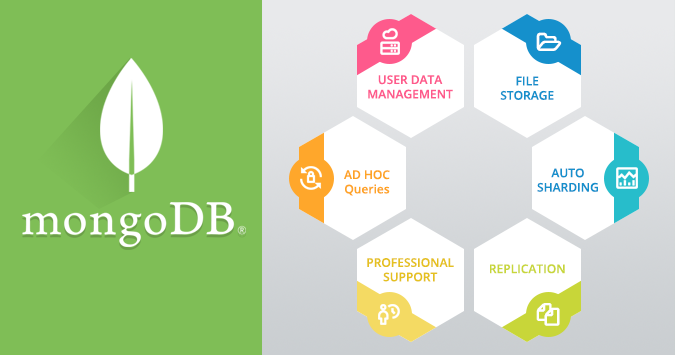Mongo DB-Review

MongoDB is a cross-platform and open-source document-oriented data model. It´s a kind of NoSQL database. MongoDB is built on architecture of collections and documents,which means,MongoDB doesn’t use tables and rows as in relational databases.
MAIN FEATURES:
AD HOC QUERIES:
MongoDB carry field, range queries, consistent expression searches. Questions can get back to particular fields of reports and furthermore incorporate user-defined JavaScript functions. Also Queries can be constructed to send back an random sample of results of a given size..
INDEXING:
It is uncommon data structures, it will store a little part of data set in a easy-to-traverse form. The index stores the estimation of a particular field or set of fields, by the value of the field as specified in the index.
REPLICATION:
MongoDB gives high accessibility replica sets. A replica set comprises of at least two or more duplicates of the information. Every replica set part may act in the part of primary or secondary replica at anywhere.defaultly,Primary replica go for all writes and reads tasks. Auxiliary copies keep up a duplicate of the information of the primary using built-in replication. At the point when an primary replica fizzles, the replica set consequently directs a election process to figure out which secondary ought to become the primary. Secondaries can alternatively serve read operations, however that information is just in the eventually consistent by default.
LOAD BALANCING:
MongoDB scales horizontally using sharding .The user picks a shard key, which decides how the information in a collection will be distributed. The information is part into ranges and distributed over numerous shards.MongoDB can keep running over various servers, adjusting the duplicating information to keep the system up and runs if there should arise an occurrence of hardware flaw.
FILE STORAGE:
MongoDB can be utilized as a file system with load adjusting and information replication over different machines storing files.
AGGREGATION:
It process data records and return computed outcomes and collects values from different documents together and perform different processes on the grouped data to give back a single result.
SERVER-SIDE JAVASCRIPT EXECUTION:
JavaScript will be used in queries, aggregation functions and can be executed by sending directly to the database.
CAPPED COLLECTIONS:
Capped collections supports only specified-size collections.
Architecture:
PROGRAMMING LANGUAGE ACCESSIBILITY:
Its with official drivers which adopts with different of programming languages and development environments.
MANAGEMENT AND GRAPHICAL FRONT-ENDS:
Administration is processed from command line tools.Like as the mongo shell because it doesnt include a GUI-style administrative interface.
Mongo DB USAGE PURPOSE :
1.Based on Document Storage
2.Record on any attribute
3.Replication/copying and available in Higher priorities.
4.Auto-sharding
5.Fast in-place updates
6.Professional support
WHERE TO USE Mongo DB?
1.Big Data
2.Content Management and Delivery
3.Mobile and Social Infrastructure
4.User Data Management
5.Data Hub
ADVANTAGES OF MongoDB OVER RDBMS
1.Schema less – Mongo DB is a document database, where one collection holds different documents. Number of fields, content and size of the document differ from one document to another.
2.Structure of a single object is clear.
3.No complex joins.
4.Deep query-ability. supports dynamic queries on documents, using a document-based query language that is nearly as powerful as SQL.and other uses Tuning and
Ease of scale-out




